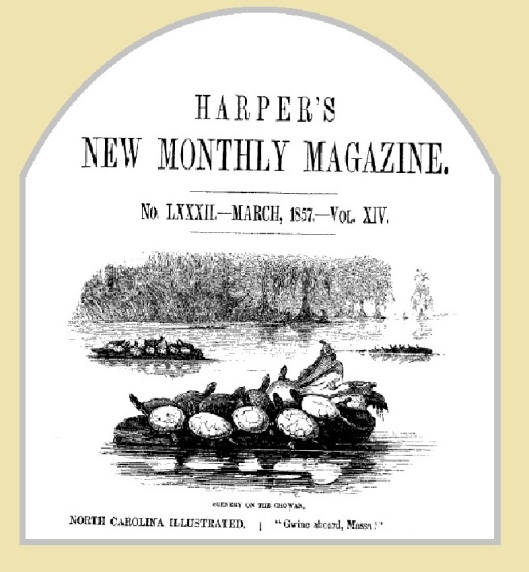Tags
David Hunter Strother, Ezra Cornell, Google Books, Harper's Monthly, Port Crayon, Porte Crayon, Samuel Morse, The Mountains, Tim Longbow, Virginia Illustrated, West Virginia Regional History Center, West Virginia University Libraries
Port Crayon
What kind of a name is that?
Is it a place or a person?
“Port” Crayon suggests a place.
“Porte” Crayon, with the simple addition of an “e” suggests a person.
(Or a pencil holder if you live in Paris)
This entire conundrum needs clarification.
So we should start in the beginning.
Apparently Port Crayon was being challenged by the likes of Tim Longbow.
Who in their right mind – – – when being challenged – – – would add an “e” to the end of his first name?
Maybe we need to look a little deeper.
Porte Crayon gave us “North Carolina Illustrated” and “Virginia Illustrated”; stories about West Virginia and other places too many to list here. Who would take on a name like Porte Crayon?
Porte Crayon was not his real name. He was born David Hunter Strother in 1816.
Others, in the future, will do a fine job of defining Porte Crayon. I will let them preview their work for you; even though this article is one hundred years ahead of its time. This is what they will write:
Porte Crayon’s father had great military plans for young David Hunter Strother; even though neither of them had really met Porte Crayon at that time.
So now these writers of the future are going to have to write this:
Samuel Morse? – – – I wonder if Samuel is going to introduce Porte Crayon to Ezra?
So Porte Crayon was invented.
He wrote and illustrated interesting and light-hearted stories for Harper’s Monthly. He was happy with his new task.
Harper’s, likewise, was thrilled with the increase in profit$ that Porte Crayon brought their way.
Then the civil war erupted.
It all ended up quite well. David Hunter Strother, a southern gentleman, appeared to have a deeper desire to keep the union together. He joined the Union Army as a Captain, was promoted to Colonel and then was assigned as Chief of Staff to a general.
The war ended and Strother accepted the job of “Adjutant General of the Restored Government of Virginia” in 1865.
He then returned to the work that made him happy; Porte Crayon’s travels through the central-southern states.
Now I must warn you, this was the antebellum period. Certain words, phrases and illustrations would not be used in today’s world. However, in the sense of keeping Porte Crayon’s work true to the period, I present his prose and illustrations intact. Please take them in the vain intended.
The use of the phrases and inflections is shown above; in the March 1857 Harper’s Monthly. A slave asks Porte “Gwin aboard Massa?” Porte has just completed the first leg of his trip at the Blackwater Railroad Station. He is about to board his boat; The Stag.
YOU CAN TRAVEL HERE TO READ SOME OF HIS WORK!
I will allow future magazines tell you about Strother’s end of life period. Then, using my usual abuse of past, present and future, I will allow Porte Crayon to tell you his own stories. I hope you enjoy them.
You know what they are going to do in the future?
They are going to give away free books to everyone.
Don’t believe me?
Click away on the below and sample the book or download it.








